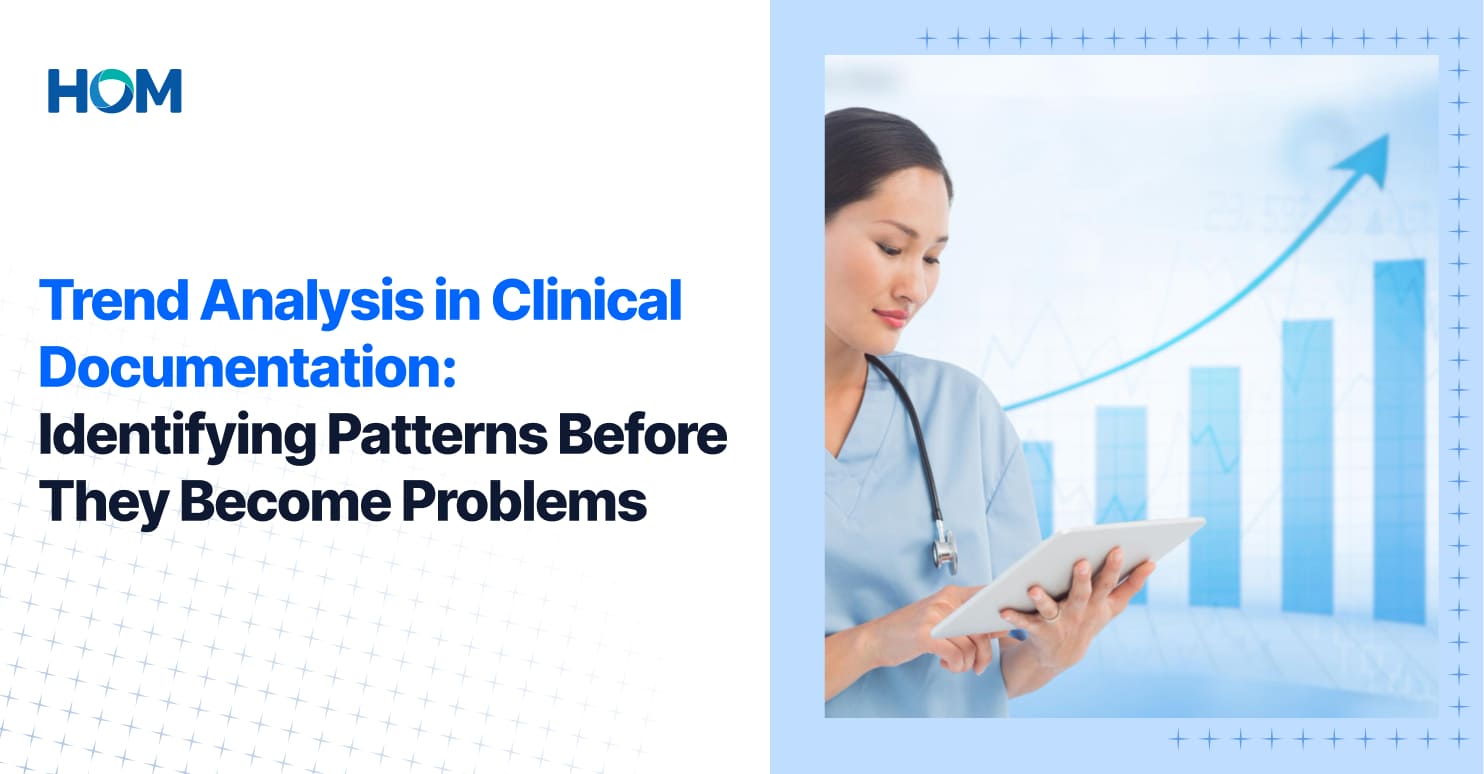
Artificial intelligence (AI) is at the center of healthcare discussions nowadays. From generative text engines to predictive analytics, AI is frequently pitched as the cure for inefficiencies in clinical documentation and medical coding.
But here’s the nuance: AI is not new to CDI and coding. Natural Language Processing (NLP) has supported workflows since the early 2000s. What’s new is the leap in capability—conversational models, automated query engines, and real-time coding assistants that are more powerful and accessible than ever.
This progress has sparked two competing narratives: one where AI replaces human coders and CDI specialists, and another where AI assists them to work smarter and faster. In this article, we unpack both views—and define what realistic adoption looks like.
Understanding the AI-Replaced Approach
Before exploring what works, it's important to understand what doesn't. An AI-replaced model would theoretically automate CDI and coding entirely, with algorithms handling everything from chart review to code selection without human validation.
The appeal is obvious: maximum speed, zero labor costs, and infinite scalability. Some organizations are experimenting with fully automated coding for straightforward cases, particularly in high-volume settings with repetitive procedures.
However, early results reveal significant challenges:
Accuracy Concerns
While AI can achieve high accuracy on clean, standard cases, it struggles with complex clinical scenarios requiring nuanced judgment. According to the 2025 Oxford Global review, AI-driven medical coding systems demonstrated markedly lower accuracy in complex, multi-comorbidity cases—dropping well below 90% without human oversight—compared to 95% or higher in hybrid human-AI workflows.
Compliance Risks
Payers won't accept "the AI made an error" as a defense during audits. Organizations remain fully liable for coding decisions, regardless of who—or what—made them.
Clinical Disconnect
Fully automated systems can't bridge the gap between documentation quality and coding accuracy. Without human CDI specialists educating providers, documentation problems persist and compound.
These limitations explain why leading healthcare organizations aren't choosing between AI-assisted and AI-replaced models; they're choosing how to implement the hybrid approach effectively.
AI-Assisted CDI: Where It Adds Real Value
AI is already reshaping workflows in CDI and coding in several meaningful ways. Here's where it's making the biggest impact:
1. Real-time Documentation Guidance
Integrated into the documentation workflow, AI-powered CDI tools check notes on the fly, pointing out gaps like laterality, severity, or causal relationships. For example:
- "Heart failure" flagged as incomplete → prompt suggests "acute on chronic systolic heart failure."
- "Asthma" flagged as vague → system suggests clarifying persistent severity and exacerbation status.
This improves accuracy upfront, reducing costly downstream queries.
2. Faster Query Drafting
Generative AI can auto-draft compliant provider queries in seconds. Yet, human CDI specialists need to determine whether a query is clinically relevant, worded appropriately, and compliant with MEAT (Monitor, Evaluate, Assess, Treat) criteria. AI accelerates; humans uphold accuracy and compliance.
3. Automated Cross-referencing
Modern AI can instantly cross-check ICD-10, CPT, and HCC coding guidelines, surfacing logic paths coders would otherwise need to research manually. Coders must still validate the final code selection against sequencing rules and clinical judgment.
4. Training and Upskilling
AI-powered simulations let new coders or CDI staff practice in a safe environment without using real PHI. These “sandbox” environments accelerate onboarding and continuous learning.
5. Workflow Optimization
AI can scan large volumes of charts and prioritize cases with a higher likelihood of documentation gaps or query opportunities. It helps CDI teams focus their expertise on where the impact is greatest.
In all of these areas, AI acts as a force multiplier—increasing speed, consistency, and efficiency.
What AI Can’t Replace in CDI and Medical Coding
For all its promise, AI has significant limitations in terms of documentation integrity and coding. Treating it as a plug-and-play replacement is neither feasible nor advisable.
Let’s look at what AI can’t replace:
- Clinical judgment and nuance: Medical coding requires understanding complex clinical relationships. Take acute kidney injury, for instance—is it caused by dehydration or something else? AI can identify possibilities, but only trained coders can apply the clinical reasoning necessary for accurate, defensible code selection
- Documentation culture and provider behavior: AI cannot turn a vague note into an accurate one. If a provider documents only "CHF," algorithms cannot infer specificity or intent. Human-led provider education and accountability are still required.
- Governance of queries and compliance: CDI queries need to be compliant, non-leading, and easy for providers to understand. While AI can help draft these queries, human oversight ensures they meet organizational policies, follow coding guidelines, and satisfy regulatory requirements.
- Knowledge gaps: AI's effectiveness depends entirely on who's using it. Without good anatomy, physiology, and coding understanding, teams risk misusing AI outputs, and amplifying errors rather than reducing them.
- Audit and accountability: In an audit, payers will not accept "AI suggested it" as a justification. Human coders and CDI specialists still have accountability for defensible documentation that meets compliance standards.
An AI-replaced approach leaves major gaps, creating risks like:
- Revenue leakage from underreported RAF scores.
- Higher audit risk from codes that lack proper support or don't meet compliance standards.
- Gaps between what's documented and the patient's actual condition.
In short, AI makes things faster, but it can't replace the expertise that keeps CDI and coding accurate.
Balancing AI with Human Expertise
The true opportunity is in balance: letting AI handle the time-intensive, repetitive work while humans add clinical, ethical, and strategic oversight.
This is how the hybrid model works:
AI as the Efficiency Engine
AI speeds up chart reviews, generates query drafts, and checks coding guidelines instantly. This cuts down on administrative work and helps teams handle more volume even when short-staffed. The result? CDI and coding staff spend less time on repetitive tasks and more time where their expertise matters most.
Human Experts as the Clinical Interpreters
Coders and CDI specialists refine AI outputs, making sure documentation is MEAT compliant, aligns with clinical reality, and withstands payer scrutiny. They connect the dots AI can't, linking documentation to patient acuity and care outcomes.
While AI handles usual rote tasks, professionals get to focus on:
- Educate providers about documentation best practices.
- Conduct more in-depth analysis of coding trends and audit risks.
- Support value-based care initiatives with accurate data capture.
At HOM, we’ve seen this balance in action. By combining AI-powered assistance with AHIMA/AAPC-certified expertise, HOM has sustained 99% coding accuracy for 8+ years across 15+ specialties—demonstrating that efficiency and integrity can scale together.
Takeaway
AI isn't here to replace CDI and coding professionals—it's here to elevate their roles. When used as a partner, AI increases speed, accuracy, and efficiency while freeing human experts to handle what machines cannot: clinical reasoning, compliance assurance, and provider education.
A balanced model protects compliance, strengthens documentation, and ultimately improves patient care. Request a free CDI and coding readiness consultation to see how AI-assisted workflows can transform your organization’s financial and clinical performance.
Bring a change to your Healthcare Operations
A partnership with HOM gives you an inherent:
Connect with our experts for a quick analysis and possibilities.

















